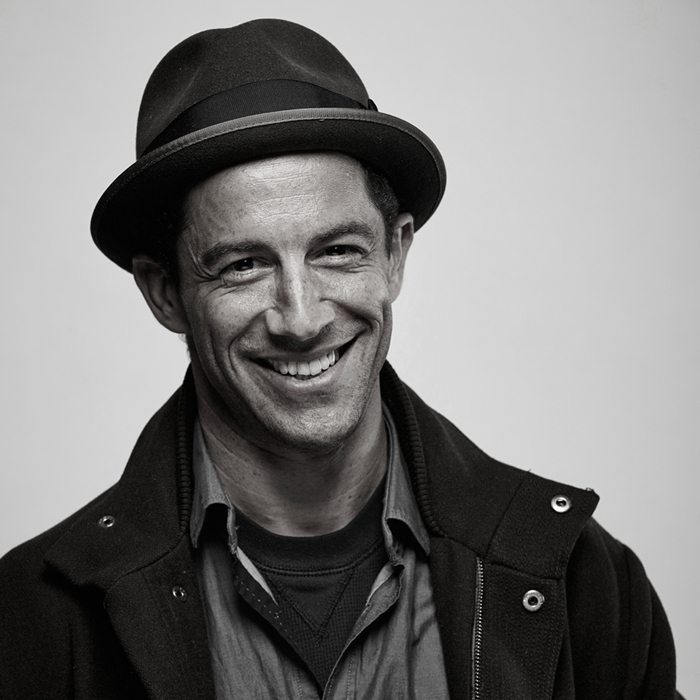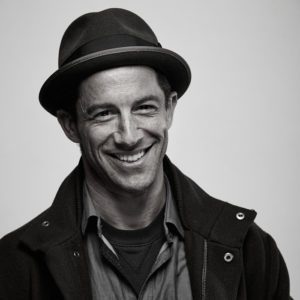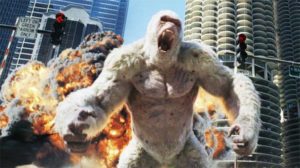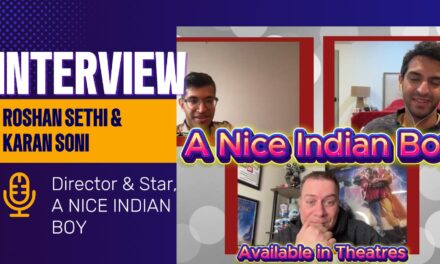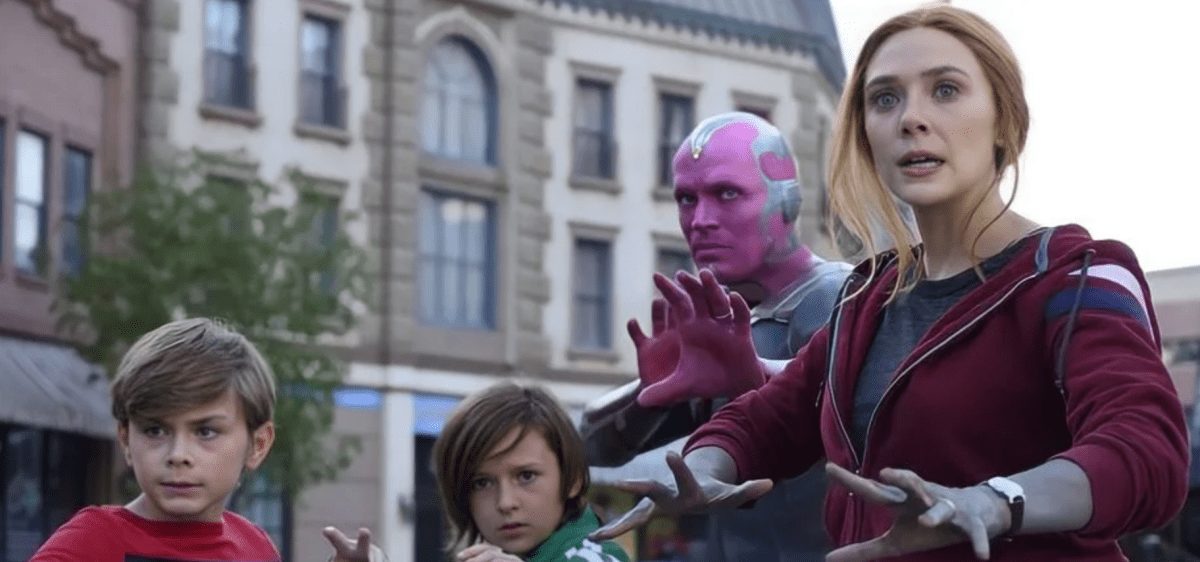In Rampage, primatologist Davis Okoye (global action icon, Dwayne ?The Rock? Johnson) shares an unshakable bond with George, an extraordinarily intelligent silverback gorilla who has been in his care since his youth. However, when a genetic experiment goes wrong and George is one of several animals transformed into raging giant beasts, Okoye must race against the clock to find an antidote to save his friend before the monsters destroy everything in their path.
With a wild premise filled with enormous action set pieces, Rampage?delivers an action thrill ride with incredible visuals. As such, cinematographer Jaron Presant felt an enormous responsibility to see director Brad Peyton?s vision come to life. A veteran of over twenty years behind the camera, Presant believes that good cinematography is essential in creating the proper environment for storytelling.
?To me, cinematography is figuring out a way to set up the viewer to best receive the story that you’re trying to tell,? he reflects. ?So, you’re trying to look for visual ways to tell the emotion of the scene, like to tell where the characters are or what the feeling is that you’re trying to convey in a scene or movie. On another level, it’s very technical and you have to actually implement a lot of technique to achieve that emotional, visual storytelling. To me, it’s about this balancing act between art and technique, which is why I find it so fascinating and especially today when we’re on the throws of so much technological change.?
Having worked with on a number of high profile projects, ranging from Star Wars: The Last Jedi?to San Andreas, Presant has also worked a wide range of directors as well. As a result, he maintains that each situation requires him to understand their expectations of him.
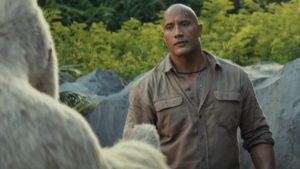 ?Every situation is different and, especially with each director. Each director has a different kind of workflow that they subscribe to and so you, as a cinematographer, you’re adjusting your own approach to the director. Rian [Johnson, director of Star Wars: The Last Jedi] has every shot already in his head and what I do with him is elaborate on those shots that he’s already got. So, when we get to the scene, I’m suggesting that we can also do this kind of shot or change it like this but Rian has a real sense of what he’s going for visually.?
?Every situation is different and, especially with each director. Each director has a different kind of workflow that they subscribe to and so you, as a cinematographer, you’re adjusting your own approach to the director. Rian [Johnson, director of Star Wars: The Last Jedi] has every shot already in his head and what I do with him is elaborate on those shots that he’s already got. So, when we get to the scene, I’m suggesting that we can also do this kind of shot or change it like this but Rian has a real sense of what he’s going for visually.?
?Then, there are other directors who don’t, like Tobe Hooper (director of Mortuary). [May he] rest in peace. I mean, Tobe was just fantastic to work with, but Tobe had a totally different approach. When he showed up, he didn’t have any sense of what he wanted visually and he would turn to me and say, how do you want to cover it? What do you want to do? We would start discussing it. I would have an idea of what would work well for the scene and then we would work off of that and bounce ideas back and forth. With Brad [Peyton, director of Rampage], he?s sort of in the middle and I loved working with him. He has an approach which is both very well-conceived and very open. Generally speaking, from the standpoint of each shot, you’re trying to find something that is the style you?ve decided on for the show but that also works the best for the emotion of that moment in the movie.?
After conversations regarding tone and style between director and cinematographer have taken place, Presant feels that that is when the film begins to take shape visually.
?Now that the visual style of the thing is set up, you go over it, prep it and come up with an approach that informs every single shot,? he states. ?Once you create the approach, then it’s applying that idea to each scene and within each scene to each shot. You’re trying to like carry the viewer along on a journey for the character’s arc and the story arcs, so you want the visuals to mirror those arcs.”
As his projects have become more high profile, one thing that has increased is the budgets on movies on which he?s had the privilege to work. Though every film is different, Presant feels that, ultimately, the process remains the same.
?Yeah, it is very much the same process in that you’re still designing a single frame in which you have to tell a story,? he explains. ?The difference when you get into scale is how much you can prep things and how much things can go awry on the day. The reason that you need more prep is because there’s a higher level of complexity to what you’re trying to achieve and there is less of a margin of error for things not going right on the day. So if you’ve got Dwayne [Johnson], he is on set shooting and you need to shoot something that is going to be great that’s going to be in the film.”
“You can’t afford to have some piece of equipment not work. That’s not to say that you can’t have flexibility, but you need to know that if you’re planning a really complicated shot that has to work, you need to make sure it will work and that’s what drives up the cost. If you have a bigger budget movie, you need to be able to know that things will execute on the day smoothly because the time on set is so expensive at that scale?But beyond that, the actual crux of what you’re doing is exactly the same. You’re trying to tell the story, trying to figure out visually what will represent the emotion of the scene best and how to convey that story visually with camera and lighting.
Over the course of his career, Presant has had the privilege to work with directors like Rian Johnson or Brad Peyton on multiple occasions. During that time, he has also built up solid working relationships with them, a process that allows him more freedom creatively in the long run.
 ?I think that the industry and the process that we go through lends itself to [working with the same team],? Presant claims. ?When you find people that you like to work with creatively, you’re going to gravitate towards working with them more. If you can do better work together than you could do a part, you’re going to gravitate back to those people because you do better work, right? You elevate each other’s work to a better place. So that’s, I think that’s, to me that’s actually the end goal of all of the networking is that you’re trying to find the people that you do the best to work with even because if the process is the best it can be, you’re going to yield the best work that you can.?
?I think that the industry and the process that we go through lends itself to [working with the same team],? Presant claims. ?When you find people that you like to work with creatively, you’re going to gravitate towards working with them more. If you can do better work together than you could do a part, you’re going to gravitate back to those people because you do better work, right? You elevate each other’s work to a better place. So that’s, I think that’s, to me that’s actually the end goal of all of the networking is that you’re trying to find the people that you do the best to work with even because if the process is the best it can be, you’re going to yield the best work that you can.?
Of course, one of the great challenges of cinematography in big budget films is maximizing on the use of computer-generated images to achieve the best possible impact. With this in mind, Presant thinks that one of the most complicated elements to CGI work is the fact that you are forced to account for images that aren?t directly in front of you during filming.
?I actually think that when you’re getting into CG work, you need to be more creative on some level than you do when everything is practical because you have to conceive of things that don’t exist,? he responds. ?It’s simplistic to say there’ll be a big gorilla and a big building there. But then, you need to start thinking, ‘wait, there’s going to be a building there so that’s actually going to create a bunch of negative fill.’ Now, all of a sudden there can’t be light coming from that direction and if the gorilla is moving–and how big is the gorilla–and what kind of shadow is that starting to place on it. Where do we want the light to come in???
?Granted you’re just entirely on the stage at this point so which way is the sun going to come within the context of this scene 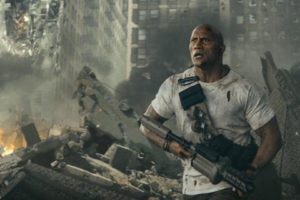 relative to these buildings and animals that don’t exist?,? he continues. ?It starts getting to a place where you actually have to conceive of a lot of things that don’t exist and try to build them in because that integration of a light more than anything is a huge element selling the CG. It’s an integration of a bunch of different departments to make sure how we’re going to play the sun coming out and when it’s going to happen, how’s it going to happen, etc. [before] we’re shooting practically with Dwayne. Though, [much of the work is] going to happen three months from now [it is pre-conceived]. and it’s getting everybody on the same page that they know that’s going to happen.?
relative to these buildings and animals that don’t exist?,? he continues. ?It starts getting to a place where you actually have to conceive of a lot of things that don’t exist and try to build them in because that integration of a light more than anything is a huge element selling the CG. It’s an integration of a bunch of different departments to make sure how we’re going to play the sun coming out and when it’s going to happen, how’s it going to happen, etc. [before] we’re shooting practically with Dwayne. Though, [much of the work is] going to happen three months from now [it is pre-conceived]. and it’s getting everybody on the same page that they know that’s going to happen.?
With this in mind, he has seen tremendous developments in terms of technology over the years. With all the improvements to areas such as CG and color matching, he believes that this is an exciting time for the film industry on a creative level.
?Color meters to me are really funny because I have had them around for years but they have never been super accurate,? he explains. ?When you add quarter green like it suggests, It doesn’t really look like right. This is really due to metamerism coupled with the lack of accuracy of the meter, but we now have a system that’s so precise?using spectrometers and lighting with x,y chromaticity coordinates. There’s this one plane sequence on Rampagewhere we took x,y readings off actual flames and fed that into an array of sky panels for an explosion. The explosion doesn’t exist obviously. It’s a CG explosion on a CGI plane but the light that we’re getting off that explosion is absolutely precise. It all pulls together in terms of color so seamlessly.?
When all of these elements come together, Presant says that, as a cinematographer, there is a moment when you simply know that you?ve achieved the perfect shot.
?I think that are some shots where you do it and things just feel like they’ve clicked. Just like the flow in pro sports, you get into this place where everything is just in perfect sync and, when that happens, you know you’ve got something that’s right. On some level, I feel like that happens on every shot. There’s this really funny thing that happens where you set up a shot with the stand-ins and it looks good… and then Dwayne or whoever the actor walks on and it just comes alive somehow. It always blows my mind. It’s like it’s everything just brought together in that one moment and it’s a powerful moment on set for me. I think that’s actually one of the things I enjoy most about cinematography is that you’re their first. It’s a really amazing moment.?
Rampage?is in theaters now.
For full audio of our interview with Jaron, click here.

